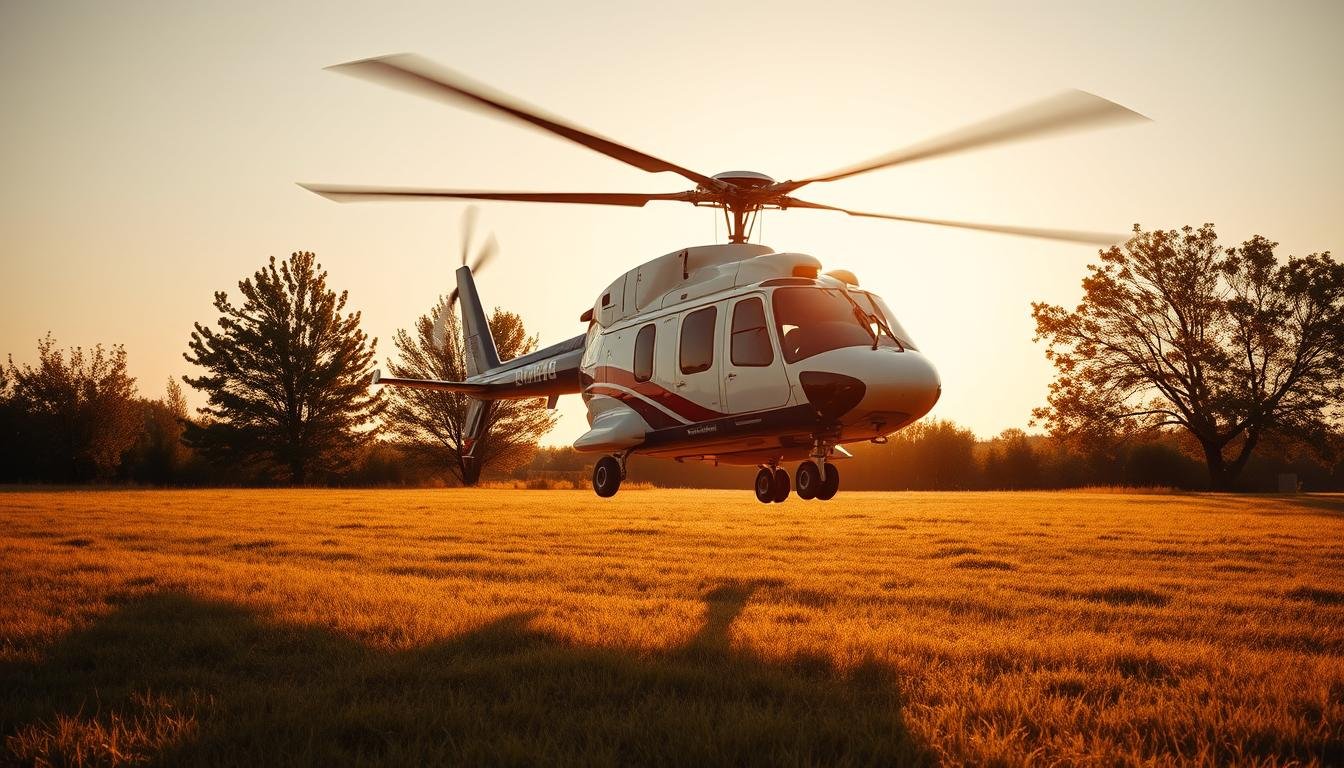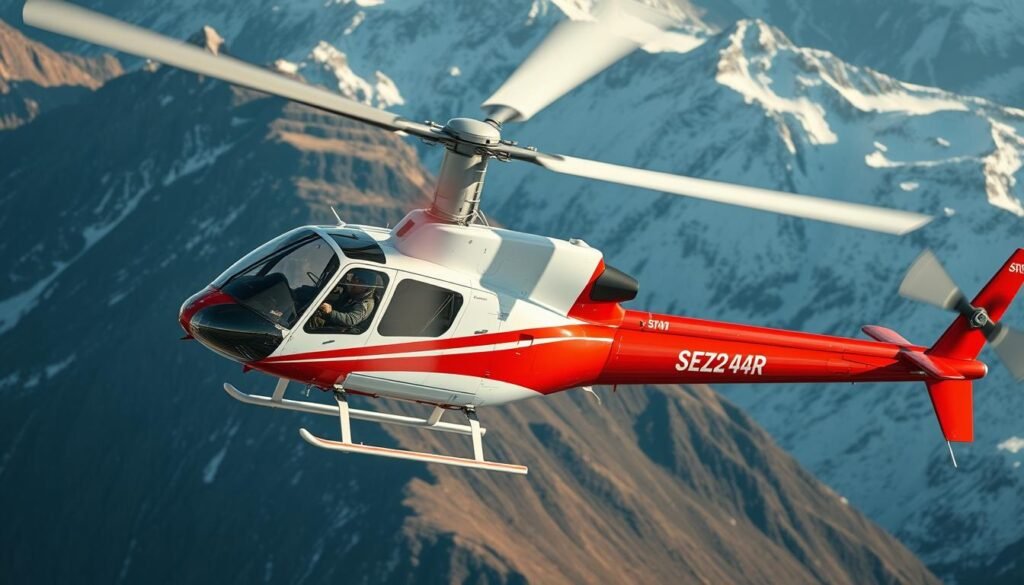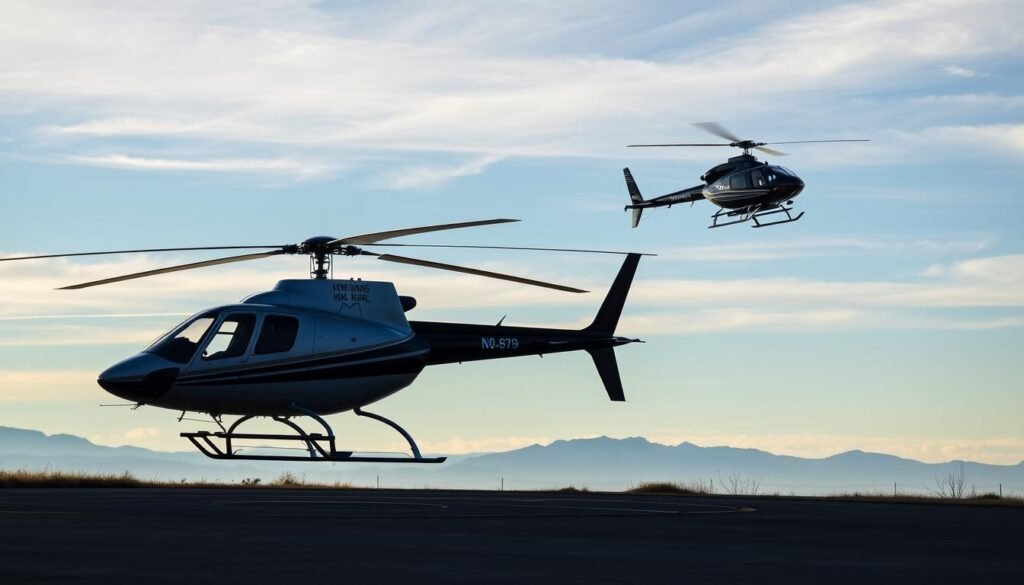Can a pilot with under 500 flight hours build a real path toward emergency medical service work? Many think EMS readiness means waiting for a single ticket or a fixed hour mark. In reality, pilots can sequence roles that add relevant experience while sharpening instrument skills and decision-making.
Practical routes include air tours, pipeline patrol, and aerial surveying — each can push flight time upward and expose pilots to varied operations. Busy flight schools and instructor roles also help a new commercial pilot gain structured time quickly.
Choosing the right pilot job matters more than just chasing hours. Some positions sit near 200–500 hours and offer real-world, Part 135 exposure that EMS operators value. For context on expected pay as they climb the ladder, consult a reliable pilot salary guide.
Key Takeaways
- Low-time pilots can pursue targeted roles that build useful experience and instrument proficiency.
- Air tours, patrol, and surveying often accelerate hours while teaching operational skills.
- Flight instructor and co-pilot tracks offer structured, transferable flight time.
- Part 135 exposure and diverse assignments improve readiness for EMS requirements.
- Salary varies widely by role and region; research market rates as you plan a career path.
Understanding The EMS Pathway With Low Hours In The United States
Building relevant experience requires sequencing roles that teach instrument work, night ops, and turbine exposure.
U.S. operators often expect pilot-in-command turbine time, IFR proficiency, and night operations—skills rarely present at very low hours.
A staged approach helps. New pilots should target flight instructor, ENG, tour, pipeline patrol, survey, ferry, frost protection, and co-pilot roles. Each role adds specific experience and procedural discipline.
Training and recurrent practice with instrument procedures and night operations improve decision-making. Meticulous logbook entries matter; recruiters look for documented flight experience tied to mission tasks.
| Role | Primary Benefit | Typical Hours Gained |
|---|---|---|
| CFI / CFII | Instructional time, procedures | 300–700/year |
| ENG / Tours | ATC skills, route discipline | 200–500/year |
| Pipeline / Survey | Precision flying, airspace work | 150–400/year |
| Part 135 Co‑pilot | Operational exposure, turbine time | Varies (often 500+ requirement) |
Plan milestones: combine a commercial pilot certificate, targeted ratings, and type work that close gaps. For practical guides on career steps and building time, see a guide on how to become an air ambulance and tips to build flight hours as a new helicopter.
Entry-Level EMS Helicopter Pilot Jobs: Where to Start with Low Hours
Strategic role selection drives meaningful flight experience faster than aimless hour-chasing. New aviators should focus on roles that teach instrument work, night operations, and mission risk management. These tasks form the backbone of medical response readiness.

Why Experience Matters And What To Do Now
Medical missions require more than basic certificates. Single-pilot IFR capability, night ops, complex weather decisions, and mission risk management demand disciplined training and relevant flight exposure.
Pilots should seek roles that build decision-making, crew coordination, and ATC interaction. Track night, cross-country, and instrument segments in the logbook. Schedule recurrent instrument and scenario-based refreshers while working.
Hour Benchmarks To Target: 200, 500, And 1,000+
200 Hours: Access to air tours and some instruction tracks. These roles accelerate logged flight time and sharpen customer-facing flight discipline.
500 Hours: Gateway for traffic watch, many survey contracts, and pipeline or powerline patrol roles. These assignments add precision flying and ATC-heavy experience.
1,000+ Hours: Opens utility, turbine, and broader co‑pilot opportunities. At this level, pilots can accumulate EMS-relevant time faster and gain complex-aircraft exposure.
- Combine seasonal work: tours in peak months, instruction or patrol in off-season.
- Build hours intentionally—prioritize instrument, night, and cross-country segments.
- Keep steady progress; focused experience beats unfocused time accumulation.
Flight Instructor (CFI/CFII): Fastest Way To Build Helicopter Time
Becoming a certified instructor is often the fastest, most reliable path for building useful flight time. Teaching provides steady sorties, lesson planning, and paid flight that stacks meaningful hours while improving technique.

Core Qualifications And Costs To Get Certified
Core qualifications require a commercial pilot certificate, a dedicated CFI course, and a demanding practical test that evaluates both flying and teaching ability.
Adding a CFII gives instrument-teaching authority and deepens the instructor’s IFR skills. Training costs include course fees, ground prep, aircraft rental, and checkride expenses, often balanced by being paid to fly once hired.
How Many Hours You Can Realistically Build Per Year
At a busy school, an instructor can log around 400–600 hours flight time annually. Many schools see roughly 500 hours a year per active instructor with steady student flow.
| Requirement | Typical Cost | Yearly Hours |
|---|---|---|
| CFI Course + Checkride | $4,000–$8,000 | 100–300 (training year) |
| CFII Add-On | $2,000–$5,000 | 50–200 (adds IFR instruction) |
| Busy Flight School Role | Hiring varies | 400–600 (steady flow) |
The instructor track helps a pilot sharpen emergency maneuvers, syllabus discipline, and safety management under real instructional pressure.
Some operators hire instructors with around 200 hours depending on local demand and qualifications, making it a viable first hire for many. For practical tips about early career moves and landing your first pilot job, read this first pilot job guide.
Electronic News Gathering (ENG) Pilot: Metro Hours And ATC Skills
Metro news flying demands crisp radio work and steady low-level handling in busy airspace. ENG shifts commonly run at dawn and dusk to catch traffic and breaking stories. These windows deliver consistent flight exposure and repetition that build real-world skills.

Typical Schedules, Crew Mix, And Airspace Complexity
Schedules center on early-morning commutes and evening peaks. That pattern creates predictable sorties and steady accumulation of hours.
The usual crew is the pilot plus a camera operator or reporter. Clear, concise communication keeps footage usable and operations safe.
- Metro ops demand tight ATC coordination and close spacing awareness.
- Frequent repositioning and orbiting improve handling and low-level comfort.
- Flights require rapid task switching among navigation, radio, and camera cues.
- Strict company procedures and safety margins matter near buildings and other aircraft.
- Logging and debriefs help pilots capture lessons and repeat good performance.
“Consistent radio phraseology and deconfliction skills earned in ENG translate directly to mission flying.”
ENG is a practical job for pilots who want urban experience while adding hours under real-time pressure. For current openings and a broader view of opportunities, see pilot job listings at pilot job listings.
Tour And Photo Flights: Scenic Time Building With Customer Focus
Tour and photography operations blend steady procedures with on‑the‑spot judgment in scenic airspace. Air tours can hire from near 200 hours, giving newer pilots paid opportunities to log useful flight time. These roles teach passenger briefings, weight and balance checks, and clear weather calls.

Photo work demands alignment for light, wind, and background while respecting aircraft limits. The pilot must say no to unsafe requests such as downwind hovers or tight obstacle margins. That professional refusal protects passengers and the ship.
Safety, Performance Limits, And Saying No To Risky Shots
Preflight briefings build trust. They cover weight, passenger seating, and escape routes. Clear guidance reduces surprises during flights.
- Tour ops offer structured time and customer handling practice for a commercial pilot path.
- Photo flights require precise airspeed and altitude control near landmarks.
- Pilots should document hours flight time and special scenarios for a stronger resume.
- Good communication balances service with aeronautical authority, protecting reputation and safety.
Overall, scenic work strengthens smooth handling, stabilized approaches, and precision positioning. For many, it becomes a visible step that advances a career while building real-world experience in helicopters and air operations.
Ferry Flight Pilot: Cross-Country Planning And Judgment Under Pressure
A well‑executed ferry requires balancing schedule pressure with conservative aeronautical decision‑making.

Ferry missions move aircraft for delivery, maintenance, or lease returns across long distances. They demand thorough route selection, weather monitoring, fuel planning, and solid navigation awareness.
Pre‑departure checks include alternates, planned fuel stops, and performance margins. Pilots must monitor density altitude and keep conservative reserves.
Enroute challenges include terrain, changing weather, and varied ATC regions. Real‑time decisions—diverting, pausing for weather, or communicating with owners—test judgment and skills.
- Mission objectives: repositioning for customers or maintenance under tight schedules.
- Log technical issues and relay maintenance discrepancies immediately.
- Coordinate with FBOs and maintenance providers across regions.
- Hold structured debriefs to capture lessons and improve SOPs.
| Aspect | Focus | Benefit |
|---|---|---|
| Planning | Routes, alternates, fuel | Lower operational risk |
| Enroute | Weather, terrain, ATC | Stronger judgment |
| Post‑flight | Debrief, logbook notes | Improved procedures |
Ferry work is a practical way to expand cross‑country competence, add diverse flight experience, and build decision‑making that many recruiters value for advanced operational roles.
Frost Protection Pilot: Night, Low-Level, And Obstacle Awareness
Flying low over fields at pre-dawn requires calm judgment and unwavering attention.
Frost protection uses rotor downwash to lift warmer air onto crops and reduce frost formation. Crews time runs for the coldest period, pushing air downward across plant rows to mix temperatures and protect yields.
Operations occur at night and early morning at low altitude. That period demands disciplined obstacle scanning and careful route planning to avoid wires, towers, and irrigation gear.
Monotony and fatigue are real risks. Teams manage vigilance with clear duty limits, scheduled breaks, and two‑pilot coordination when available.
- Common aircraft: Robinson R22/R44, MD 500, Bell 206—each has performance limits in cold or heavy-loading conditions.
- Pre-map hazards, mark fences and towers, and use lighting wisely to preserve visual cues.
- Coordinate timing with growers and ground support to match forecasts and field priorities.
- Adopt conservative weather minima, personal minimums, and a go/no‑go checklist to standardize decisions.
| Focus | Benefit | Operational Note |
|---|---|---|
| Low-Level Night Work | Real-world night handling | Log night and low-level entries in the logbook |
| Obstacle Pre‑Mapping | Fewer surprises | Record hazards and routes before each period |
| Grower Coordination | Better timing and safety | Align runs with frost windows and support crews |
Overall, this disciplined job builds valuable night, low‑altitude experience and teaches procedures that translate to other mission flying. Pilots who document time and follow checklists show clear operational exposure for future roles.
Co-Pilot Roles In Twin-Engine Helicopters: Learn While You Earn
Stepping into a co‑pilot seat on a twin opens fast access to structured procedures and real multi‑crew exposure. Some operators will hire co‑pilots with only a few hundred hours depending on contract needs and aircraft type.
These roles teach standardized SOPs, checklists, and callouts that build cockpit discipline quickly. Newer pilots gain hands‑on familiarity with twin‑engine performance, system redundancy, and higher gross weights.
Training pipelines cover normal, abnormal, and emergency procedures in more complex types. That structured training, plus constructive mentorship from experienced captains, accelerates professional growth.
Co‑pilot work also sharpens IFR readiness. Repeated radio work, approach flows, and multi‑crew coordination reinforce procedures that translate directly into mission flying and future command roles.
- Some seats are accessible with modest hours based on contracts.
- Multi‑crew procedures and debrief culture raise standards quickly.
- Track task competency, not just logged time, to show depth to employers.
- Seek recurrent training and frequent feedback to speed promotion toward captaincy and advanced roles.
For practical expectations in early commercial years, consult this guide on what to expect in your first.
“Learning under an experienced captain in a standardized environment is often the fastest route from co‑pilot to command.”
Utility And Pipeline/Powerline Patrol: Precision Flying For Real-World Work
Utility and patrol work demand steady precision and clear procedures on every sortie.
Utility flying covers varied mission tasking that sharpens adaptability across many operational profiles. Pilots rotate between photo work, event transport, and inspection flights, building versatile flight experience over months and years.
Patrol crews survey routes for leaks or damage, often over remote terrain with few landing options. That reality forces conservative fuel and weather planning and rigorous hazard recognition during preflight and enroute checks.
Patrol Hiring Minimums, Aircraft Familiarity, And Terrain Risks
Some postings cite about 400–500 hours and current instrument currency as common company requirements. Familiarity with the operator’s aircraft type work and systems improves hiring odds.
- Discipline in route tracking and standardized reporting helps clients and law enforcement coordinate responses.
- Precision flying, careful preflight planning, and consistent procedures reduce risk in low‑option terrain.
- Many roles come via contracted survey firms or direct hires by utility companies; tailor applications to each model.
| Focus | Typical Benefit | Operational Note |
|---|---|---|
| Patrol Flights | Precision handling | Limited landing sites |
| Utility Work | Versatile experience | Varied mission types |
| Contracted Ops | Professional procedures | May follow Part 135 |
“Detailed reporting and standardized logs make a pilot’s time count for future mission roles.”
Overall, patrol and utility work build mission-focused skills that translate directly into advanced air operations. Documenting findings and sticking to procedures strengthens a pilot’s career profile and readiness for more complex work.
From Low Hours To EMS: Skills, Ratings, And Experience That Translate
Building mission-ready skills means translating diverse flight roles into repeatable procedures and clear decision habits.
Focus on usable proficiency rather than raw totals. Documented instrument work, night currency, and crew coordination matter most when operators evaluate candidates.
Instrument Proficiency And IFR Operations For EMS Readiness
Maintain an instrument rating with practical approaches, missed approach discipline, and frequent navigation practice. Use simulators or safety pilots for scenario training when IMC access is limited.
Keep approach briefings clear, log actual and simulated IFR time, and practice abnormal handling until actions become procedural and calm.
Decision-Making, Crew Coordination, And Night/IME Exposure
Apply decision frameworks like PAVE and DECIDE on every sortie. These tools help standardize weather calls, risk acceptance, and go/no‑go choices.
Crew resource management and sterile cockpit habits improve communication in multi‑crew and single‑pilot IFR situations. Post‑flight debriefs and documented SOP adherence show continuous improvement.
| Role | Key Skill Built | How It Maps To Missions |
|---|---|---|
| Instruction | Procedure discipline | Structured briefings and logged instrument segments |
| ENG/Patrol | ATC flow & low-level navigation | Weather calls, tight radio work, and precision routing |
| Ferry/Tour | Cross‑country planning & night ops | Fuel/alternate planning and obstacle awareness |
Log relevant scenarios—night, instrument, confined‑area work—and keep entries tied to mission tasks. When ready, present documented SOPs and debrief notes alongside hours and flight time on applications such as pilot job listings.
Where To Find Jobs Now: U.S. Boards, Schools, And Regional Operators
Searches that focus on specific roles and regions often surface the best early-career openings.
Location Matters: Seasonal Demand And Region-Specific Opportunities
Region and season shape demand. Tour hubs, frost belts, and large metro centers fuel different peaks of hiring. Tour operators hire heavily in summer. Frost protection firms staff winter shifts. Metro ENG work follows news cycles.
Networking Strategies With Flight Schools, Operators, And Events
Combine board searches with direct outreach. Check aviation job portals, operator career pages, and local school postings. Call bases, meet managers, and leave targeted resumes that list a commercial pilot certificate and instrument rating.
| Source | Best For | Quick Tip |
|---|---|---|
| Aviation Job Boards | Tours, survey, Part 135 listings | Set alerts for region and type |
| Flight Schools | CFI openings, steady flight hours | Offer certified flight instructor availability |
| Operator Career Pages | Co‑pilot and seasonal hires | Contact HR directly after applying |
| Local Events | Networking with companies and law enforcement | Attend airport open houses and industry meetups |
Track applications weekly and tailor each message to the company’s needs. Realistic salary expectations vary by role and region; match offers against relocation costs and career goals.
“Direct outreach and a clear logbook summary often beat generic applications.”
Conclusion
Steady, Role-Focused Progress Gives Pilots A Reliable Path From Early Flying Toward Complex Missions.
A structured sequence of roles — tours, instruction, ENG, patrol, survey, ferry, and frost protection — helps a pilot build meaningful flight time in the 200–500 hours range.
More roles open around 1,000 hours and beyond. Operators then expect instrument proficiency, night exposure, and solid decision-making. U.S. salary ranges vary by region and role, but pay generally rises as qualifications and mission complexity increase over the years.
Maintain clear records, seek instructor feedback and simulator time, and stay flexible about location and schedule. Those habits compound skill growth and long-term career value.
There are a lot of routes into mission flying; choose the way that balances safety, learning, and steady progress. For context on employers and hiring trends, review this list of top employers.
FAQ
How can a pilot with under 200 hours begin building time toward medical transport work?
A pilot with fewer than 200 hours should pursue roles that offer frequent, mission-like flights. Becoming a certified flight instructor (CFI/CFII) or joining tour and photo operations provides consistent pilot-in-command time. Working as an electronic news gathering (ENG) or ferry pilot also builds diverse experience in controlled airspace and cross-country planning. The candidate should add instrument training and commercial certification quickly to expand options.
What minimum certifications speed the path from low-hours flying into paid, operational roles?
The critical credentials include a commercial pilot certificate and at least a private pilot certificate before that. An instrument rating markedly increases employability, especially for utility, patrol, and co-pilot positions. A certified flight instructor rating (CFI/CFII) accelerates hour-building. For twin-engine co-pilot positions, a multi-engine helicopter rating or company-specific training is often required.
How many hours should a pilot target before serious consideration for medical transport positions?
Most air ambulance operators set benchmarks at 500 to 1,000 total flight hours and often require specific turbine and multi-engine time. Reaching 200 hours is a useful early goal; 500 hours opens co-pilot and many utility roles; 1,000+ hours strengthens candidacy for primary medic pilot assignments. Specialized instrument and night experience also weigh heavily.
Is instructing the fastest legal way to build helicopter flight time?
Instructing typically offers the most predictable, high-frequency flight time per week and teaches teaching-related skills that employers value. It carries costs for initial certification and recurrent training but yields steady PIC time, a mix of training scenarios, and opportunities to log simulated instrument and cross-country flights.
What hourly growth can an instructor expect annually in real conditions?
Realistic annual hour accumulation varies by season and school size. New instructors at busy flight schools can log 300–600 hours in a year. Part-time positions and off-season slowdowns may reduce that. The actual rate depends on aircraft availability, student demand, and an instructor’s willingness to fly evenings and weekends.
How does ENG work prepare a pilot for demanding airspace and ATC interactions?
ENG operations require flying in and out of congested metro airspace, rapid routing changes, and tight altitude/airspeed control to capture shots. Pilots gain proficiency with ATC communications, airspace transitions, and low-altitude navigation—skills directly relevant to law enforcement, air ambulance, and precision utility tasks.
What are the main operational risks for tour and photo flight pilots, and how are they mitigated?
Key risks include confined-area maneuvering, weight-and-balance changes with passengers, and pressure to accept risky shots. Operators mitigate these through conservative performance limits, strict briefings, go/no-go decision standards, and clear refusal policies for unsafe customer requests. Consistent SOPs and safety culture are essential.
What experience does ferry flying give that employers value?
Ferry flying builds cross-country planning, weather evaluation, and single-pilot workload management. It tests navigation, endurance, and contingency planning under pressure. Employers value the judgment and route-planning competence that come from repeated long-distance transfers and multi-leg ferry missions.
What unique challenges exist for frost protection and agricultural-style low-level flying?
Night operations, low-level work, and obstacle-rich environments demand precise aircraft control, strong visual scanning, and rapid threat recognition. Pilots must be proficient in risk assessment, terrain and obstacle avoidance, and night/IMC contingency procedures. Specialized briefings and local experience reduce exposure to hazards.
How do co-pilot roles in twin-engine aircraft accelerate career progression?
Co-pilot positions provide turbine time, systems experience, and exposure to SOP-driven, multi-crew environments. They teach crew resource management, checklist discipline, and complex systems troubleshooting. Logging turbine and multi-engine hours in these roles makes a pilot competitive for primary operator roles, including medical transport.
What are hiring minimums for utility, pipeline, and powerline patrol work?
Patrol operators commonly require a commercial certificate, an instrument rating, and a baseline of several hundred hours, often 500+. Familiarity with specific aircraft and precision low-altitude flying is preferred. Hiring also considers terrain experience, a strong safety record, and the ability to perform repetitive, precision tasks reliably.
Which skills and ratings most directly transfer from low-hours work to air medical readiness?
Instrument proficiency, night flying experience, turbine/multi-engine exposure, and strong crew coordination skills translate best. Decision-making under pressure, threat and error management, and simulated instrument approaches are especially valuable. Medical operators also prefer pilots with proven SOP discipline and robust human factors training.
How important is IFR competence for someone aiming at ambulance roles?
IFR competence is critical. Many medical flights operate in marginal weather, at night, or on instrument approaches to hospitals. A solid instrument rating and practical IFR experience reduce risk and increase operator confidence in a candidate. Simulated and actual IMC time both carry weight.
Where should pilots look now for opportunities that build relevant hours in the United States?
Active job boards like Vertical Reference, Helicopter Association International listings, and regional operator career pages list openings. Flight schools, tour operators, ENG companies, and utility contractors regularly hire and train. Networking at HAI Heli-Expo, local pilot meetings, and with instructors often reveals unadvertised openings.
How does geography affect seasonal demand and hiring prospects?
Regions with long tourism seasons produce steady work for tour and survey pilots. Mountainous or energy-rich areas offer utility and patrol jobs tied to infrastructure projects. Coastal metro regions generate ENG and news flying roles. Pilots should target regions where year-round operations match their desired experience growth.
What practical networking strategies accelerate placement with schools and operators?
Pilots should maintain an up-to-date résumé, logbook summaries, and a concise cover email. Visiting local flight schools, attending industry events, and joining professional groups on LinkedIn or in-airport pilot lounges opens doors. Mentorships and referrals from established instructors or company pilots often lead to early hiring opportunities.



